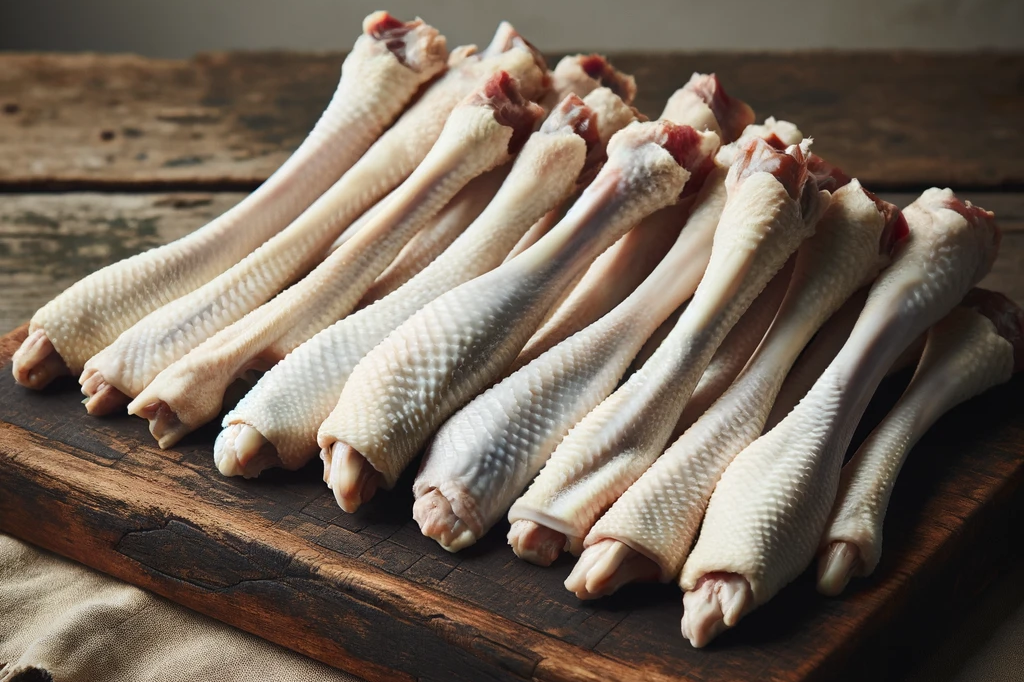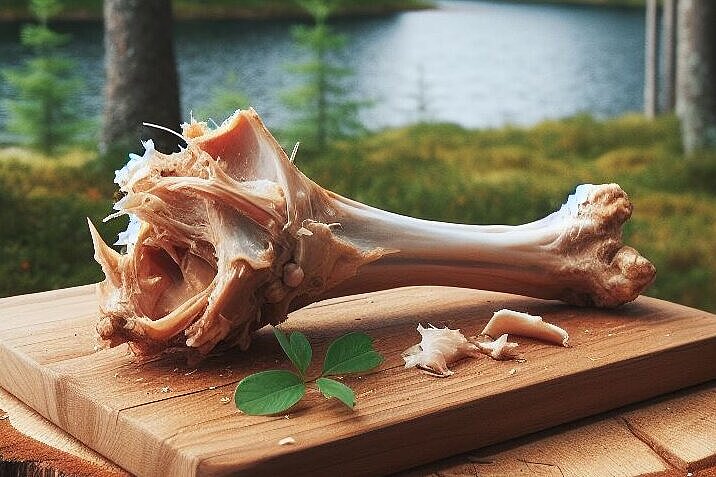Pigeon thigh bone
A dog's diet is a multifaceted topic that requires constant attention and care. In this context, pigeon bones are a particularly interesting, albeit controversial, food. On the one hand, they offer a source of nutrients that can be beneficial for your four-legged friend's health, but on the other hand they also harbor risks. In this article, you'll learn everything you need to know about pigeon bones - from their definition, to the benefits and drawbacks, to final considerations to help you make an informed decision about your dog's diet.
What are pigeon thigh bones?
Pigeon thigh bones are, as the name suggests, the bones from the thighs of pigeons. They are usually found in dogs' diets as part of a raw meat diet (BARF - Biologically Appropriate Raw Food). Their size and structure vary depending on the type of pigeon and the age of the bird. They are smaller than most other poultry bones and have a different composition, making them both useful and potentially dangerous for dogs.
Benefits of pigeon leg bones
Rich in nutrients
Pigeon leg bones are an excellent source of calcium and phosphorus, two essential minerals that are vital for bone and tooth development in dogs. They also contain bone marrow, which is rich in fat and vitamins such as vitamin A and D, which help to support the immune system and skin health.
Promoting dental hygiene
Chewing on pigeon leg bones can help to reduce plaque and tartar in dogs. The mechanical abrasion cleans the teeth and massages the gums, helping to prevent gum disease.
Behavior promotion
Chewing is a natural and necessary behavior for dogs. Chewing on bones can relieve stress, combat boredom and reduce destructive behavior.
Disadvantages of pigeon bone
Risk of injury
Although pigeon leg bones are smaller and softer than the bones of larger animals, there is still a risk that they can splinter and lead to internal injuries, blockages or even choking.
Nutritional imbalance
Overfeeding bones, including pigeon leg bones, can lead to an imbalance of nutrients, particularly an excessive calcium-phosphorus ratio, which in turn can cause other health problems.
Disease transmission
Raw poultry, including bones, can contain bacteria such as Salmonella and Campylobacter, which can be dangerous to both dogs and humans.
Pigeon bones can be a valuable addition to your dog's diet, but it is important to use them with caution. The benefits, such as promoting dental hygiene and providing important nutrients, are considerable. However, the risk of injury and illness should not be underestimated. Individual factors such as the dog's size, age and state of health should be taken into account when making a decision. In this way, you can ensure that your best friend's diet remains safe, balanced and healthy.
If you notice any signs of hypersensitivity or poisoning in your dog, you should see your vet immediately. We are not a substitute for a vet, but we try to be as accurate as possible. Every dog reacts differently and we recommend you get a second opinion or consult your vet if in doubt.
Stay healthy and take good care of your four-legged friend!😊
Similar to Pigeon thigh bone
Duck thigh bones are exactly what their name suggests: the bones from the thighs of ducks. They can be offered raw, cooked or dried and are considered a tasty and nutritious addition to regular dog...
Goose thigh bones are the hard structures that form the lower part of a goose's leg. After the meat has been removed for human consumption, the bones often remain, which at first glance appear to be...
Chicken thigh bones are the bones from the lower part of the chicken leg. They consist of a long tubular bone and a short jointed bone. The bones are surrounded by meat, skin and cartilage. Chicken...
Turkey thigh bones are the bones found in the lower part of the turkey leg, an area known for its dark, flavorful meat. While the meat is a popular source of protein, the bones themselves draw a...



